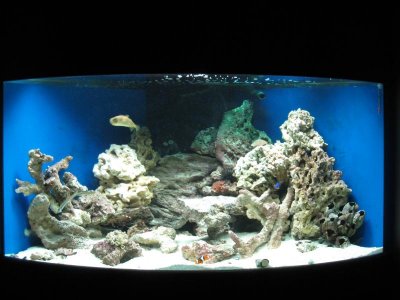mvsjrs
New member
Continuing to avoid the pump noise issue, I moved on to the ventilation of the hood. The room is already heated by sunny windows, a box turtle terrarium, 4 LCD monitors, 3-4 workstations and sundry electronics. I have a hard time keeping it at 84degF without freezing the wife in other parts of the house. So, I would like to vent any lighting heat possible just for my comfort and secondarily for keeping the tank coil. A good 50% of the ultimate water will however be in the basement with an ambient temperature of 60-64degF winter to summer. So cooling for my wet guests should not be an issue.
Here's what I did to vent my hood. Lowes provided a low profile dryer vent that is expandable to accommodate various heights. I separated the two halves and drilled holes to match my canopy then flipped it over so the vent port was pointing away from the canopy. A little flat black the structure disappears into the gap behind the tank.
The vent hole is positioned to match a similar dryer line installed in the wall down to the basement. A vent fan with thermostat will draw air from the room, through the canopy and into the basement. Depending on the heating needs of the tank, I have considered venting this hot air into an "cabinet" enclosing some of the spare water reservoirs.



Here's what I did to vent my hood. Lowes provided a low profile dryer vent that is expandable to accommodate various heights. I separated the two halves and drilled holes to match my canopy then flipped it over so the vent port was pointing away from the canopy. A little flat black the structure disappears into the gap behind the tank.
The vent hole is positioned to match a similar dryer line installed in the wall down to the basement. A vent fan with thermostat will draw air from the room, through the canopy and into the basement. Depending on the heating needs of the tank, I have considered venting this hot air into an "cabinet" enclosing some of the spare water reservoirs.



Last edited:





























